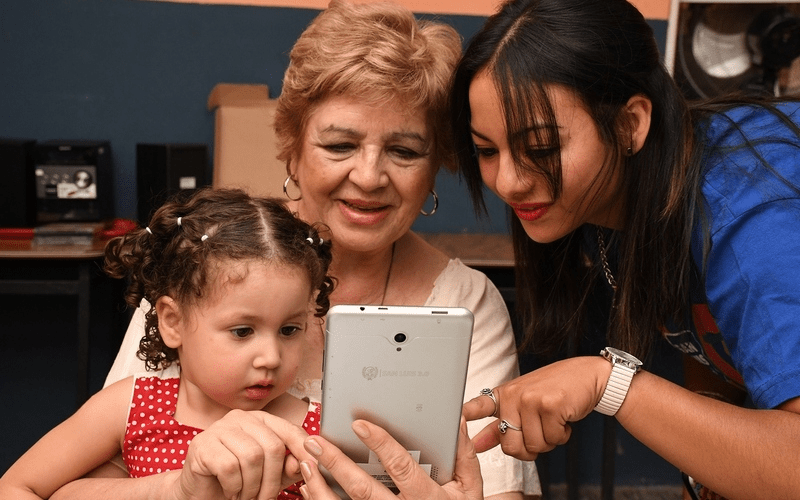Author: Nehal Gaur is currently pursuing a Postgraduate program in Public Policy, Design, and Management at the Indian School of Public Policy. She pursued her M.A. in Political Science from the Faculty of Social Sciences, University of Delhi, and graduated with B.A. (Hons.) Political Science from Lady Shri Ram College. Nehal advocates for inclusive education, gender sensitivity, and mental health awareness

India is a pioneer in building digital public infrastructure and platforms (DPIPs). The country has accelerated its digital transformation in recent times. The accelerated pace can also be attributed to the pandemic as it changed our perspective towards digitization. With the country leapfrogging in the digital economy landscape, it is unfortunate that a digital gender divide stares us in the eye. For India to establish itself as an invincible global leader in the digital economy segment, it has to make serious attempts to bridge the gender digital divide urgently. This can be leveraged to increase women’s abysmal labor force participation rate. India falls below the average female internet users in the lower-middle-income regions and Asia Pacific.
Reasons for the Gender Digital Divide
- Affordability barrier– The smartphone prices in India are not commensurate with the country’s per capita income. The affordability of devices with internet connectivity acts as a significant barrier to the accessibility of internet-enabled devices for women. If families can afford a single device, it is for the male member of the family. According to Oxfam’s India Inequality report, by the end of 2021, 61 percent of men possessed a mobile phone, while only 31 percent of women had one, indicating a significant difference of 30 percent between the two genders in terms of phone owners.
- Low digital literacy levels among women- During 2014-16, the government implemented 2 schemes- National Digital Literacy Mission (NDLM) and Digital Saksharta Abhiyan (DISHA). The schemes collectively targeted 52.50 lakh persons (one person from every eligible household across the country). The schemes were later closed and in 2017, the government launched the Pradhan Mantri Gramin Digital Saksharta Abhiyan (PMGDISHA) scheme aimed at 6 crore households. However, the schemes target one person from each household which acts as a barrier and is not reflective of inclusivity. According to the Gender Gap Report (2022) by GSMA, there is a gender gap of 41% in mobile internet usage. The usage gap indicates that women lack the technical know-how and heavily depend on others to access the internet.
- Socio-cultural barriers- Women who spend time online are awarded a badge of immorality. Studies conducted show that there is a perception that “good girls do not go online.” Viewing an economic opportunity from the morality lens reflects the embedded socio-cultural biases in society. The gatekeepers of women’s honor attach a negative connotation to the online space. They view it as a distraction for women as it can derail them from their household responsibilities. Society targets and blames women for bringing shame and dishonor to the family if they challenge conventional behavioral norms and expectations. Women must maintain the image and reputation of their families by behaving in a socially acceptable and appropriate manner. Several women fear their online presence may lead to harm or cyberbullying. They cannot subject themselves and their families to severe trauma.
Correlation between Access to Digital Technologies and Female Labor Force Participation
According to the World Bank (2021), female labor force participation is 23% in India. The low female labor force is a cause for concern. Women lack financial autonomy which translates into dependence and exploitation. With India’s aspiration of being a $5 trillion economy, it is imperative that women are a part of the labor force. The prosperity of the economy is hugely dependent on women’s participation and their withdrawal from the workforce must be addressed. Access to digital technologies is an enabler for women to enter the workforce. For instance, Project ‘TARA WE ADD’ (Technology & Rural Advancement for Women Empowerment through Annihilating Gender Digital Divide), by Development Alternatives, a civil society organization, aimed at digital literacy highlights how women can get increased incomes and better means of livelihood by acquiring digital skills. Women used the internet to learn new skills, solve queries about issues, and start new businesses.
Bridging the Gender Digital Divide to Improve Women’s Employability
- Ensure affordability and accessibility of devices- Introducing customized devices for women with essential features can ensure accessibility of devices. Smartphones carry several non-essential features which can be omitted. This can reduce the cost of the devices and make them affordable,
- Measures to increase digital literacy among women- The one-person per household mandate for digital literacy programs by the government must be reconsidered. As suggested by the Standing Committee on Information Technology’s report titled Review Of National Digital Literacy Mission (NDLM) – Problems And Challenges the government must focus on the scalability of the digital literacy missions. Additionally, digital literacy missions targeted at women can be game-changers for eliminating the gendered divide.
- Changing perceptions about the online space- Socio-cultural barriers must be tackled by creating safe online spaces for women. Gender-based violence and discrimination on online platforms act as major deterrents for women. Sensitizing women and families by conducting awareness campaigns about leveraging social media for economic gains is absolutely necessary. Women who have established their businesses through access to digital platforms can be role models for other women. The stories of these women must be shared and popularised to reinstate women’s faith in online platforms.
With inclusivity at the forefront of the government’s agenda in the G20 presidency and the budget, it is crucial to address the digital gender divide. Further, there is a positive correlation between the acquisition of digital skills and economic opportunities. In today’s digital age, if women are left behind in access to technology, it will severely affect their employment opportunities. The future of work relies extensively on digitization and automation, and women need to be equipped with the necessary digital know-how to be a part of the workforce. Government initiatives and civil society organizations must amp up their efforts to impart digital skills to women. Inclusivity must be substantive and not remain restricted to the agenda on paper.
*“The views expressed in the article are author’s personal and are not endorsed by the Global Policy Consortium (GPC) or assumed by their members”
